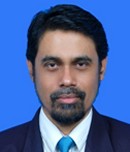

Plenary Lecture
Experimental Studies on Building Integrated Photovoltaic Thermal Collectors with Different Absorber Design

Professor Kamaruzzaman Sopian
Solar Energy Research Institute
Universiti Kebangsaan Malaysia
MALAYSIA
E-mail: ksopian@eng.ukm.my
Abstract: The performance of building integrated photovoltaic thermal (BIPVT) collectors were determined by the PVT efficiency and primary-energy saving efficiency of the three collectors. The first collector, known as Serpentine flow absorber, the second collector, known as Oscillatory flow absorber, the third collector known as Parallel-serpentine flow absorber. In this study, it is assumed that the absorber collectors were attached underneath the flat plate single glazing sheet of polycrystalline silicon photovoltaic module and water has been used as a heat transfer medium in absorber collectors. The testing has been performed for the BIPVT collector under solar radiations at 800 W/m2. The various mass flow rates were introduced and ranging from 0.011 kg/s to 0.041 kg/s. The analysis on the BIPVT collectors have been segregated into three sections comprised of PV efficiency, thermal efficiency and combination of both (PVT efficiency). The results show that Parallel-serpentine flow absorber gave the highest efficiency at mass flow rate of 0.041 kg/s. It produced PVT efficiency about 65% with 13% PV efficiency and of 52% thermal efficiency, also it produced primary-energy saving efficiency from about 76% to 86% at the mass flow rate from 0.011 kg/s to 0.041 kg/s.
Brief Biography of the Speaker: Prof. Dr. Kamaruzzaman Bin Sopian obtained his BSc in Mechanical Engineering from the University of Wisconsin-Madison in 1985, MSc in Energy Resources from the University of Pittsburgh in 1989 and PhD. in Mechanical Engineering from the Dorgan Solar Laboratory, University of Miami in 1997. He is presently the Professor in Renewable Energy at the Department of Mechanical and Material Engineering, UniversitiKebangsaan Malaysia. Currently, he is the Director of the Solar Energy Research Institute, a center of excellence for the research and development in solar energy technology. He has been involved in the field of solar energy for more than twenty years. His main contributions are in solar radiation modeling, alternative material for solar absorber, solar water heating system with integrated storage system, solar desalination, solar cooling, daylighting using solar light pipes, solar assisted drying systems, grid-connected photovoltaic system, thin film silicon solar cells, combined photovoltaic thermal or hybrid collector and solar hydrogen production system. He has published over 400 research papers in journals and conferences. He has delivered keynotes speeches at national and international conferences on renewable energy. He is the founding member of the Malaysian Institute of Energy, member of the World Renewable Energy Network based in the United Kingdom and is an associate editor of the Renewable Energy and Sustainable Cities and Society published by Elsevier Ltd. He heads several national subcommittees on renewable energy by the Malaysian government to promote awareness, market enhancement, policy studies and the applications renewable energy.